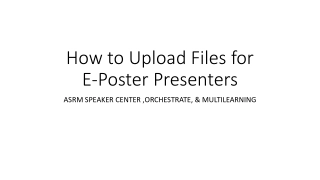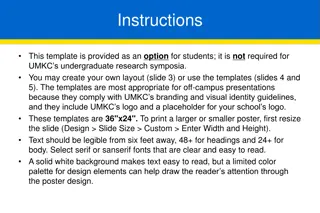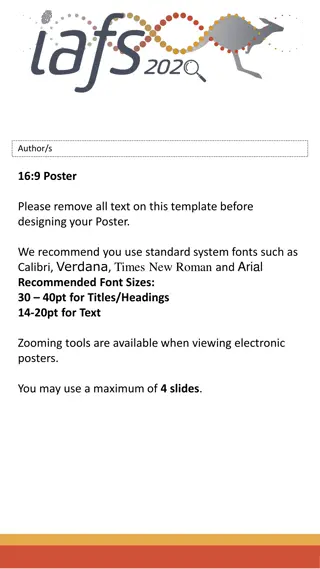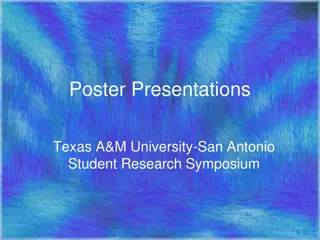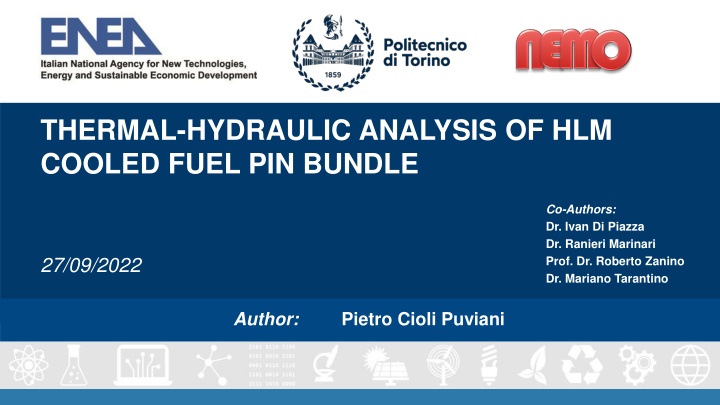
Multiscale Thermal-Hydraulic Analysis of HLM Cooled Fuel Pin Bundle
Explore a detailed thermal-hydraulic analysis of HLM-cooled fuel pin bundles, focusing on turbulence models, boundary layer descriptions, and computational cost reduction approaches. The study includes validation against experimental data and insight into future developments for LFR safety assessment tools.
Download Presentation

Please find below an Image/Link to download the presentation.
The content on the website is provided AS IS for your information and personal use only. It may not be sold, licensed, or shared on other websites without obtaining consent from the author. If you encounter any issues during the download, it is possible that the publisher has removed the file from their server.
You are allowed to download the files provided on this website for personal or commercial use, subject to the condition that they are used lawfully. All files are the property of their respective owners.
The content on the website is provided AS IS for your information and personal use only. It may not be sold, licensed, or shared on other websites without obtaining consent from the author.
E N D
Presentation Transcript
THERMAL-HYDRAULIC ANALYSIS OF HLM COOLED FUEL PIN BUNDLE Co-Authors: Dr. Ivan Di Piazza Dr. Ranieri Marinari Prof. Dr. Roberto Zanino Dr. Mariano Tarantino 27/09/2022 Author: Pietro Cioli Puviani
Introduction & Background The safety assessment of future LFR must rely on tools able to analyze 3D TH phenomena. CFD tools represent a solution, but require high computational time for complex components and system analysis. Model of CIRCE Fuel Pin Bundle Simulator: Validation against experimental data of different turbulence models Evaluation of performances and time saving of two different computational cost reduction approaches: Wall function on the boundary layer Porous media IN THIS WORK 2 Multiscale Thermal-Hydraulic Analysis of the ATHENA Core Simulator
Methods & Results Code to experimental comparison of local and bulk quantities in FPS configurations Different turbulence models Standard k- SST k- BSL RSM Different approach for boundary layer description: Resolved boundary layer Wall function Code to code study of 3 approaches for FPS description based on PM Single PM Double PM Hybrid approach 3 Multiscale Thermal-Hydraulic Analysis of the ATHENA Core Simulator
Conclusions + Future Work Main feedbacks Future development: Choice of the best turbulence model: Evaluation of the performance of PM-based representing heat between FAs and with different geometrical configurations Application of PM in system-level CFD models models in coupling Resolved boundary layer Wall function SST k- Standard k- Best porous media approach for an hexagonal FB: Hybrid Media model (Hybrid) ATHENA Core Simulator layout 2 orders of magnitude Time saving 4 Multiscale Thermal-Hydraulic Analysis of the ATHENA Core Simulator
Pietro Cioli Puviani pietro.ciolipuviani@polito.it

